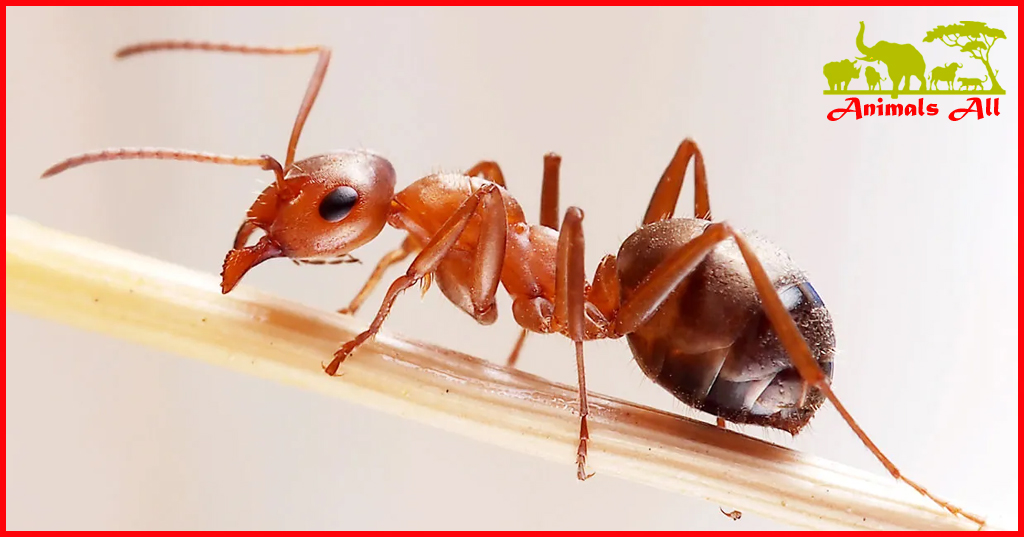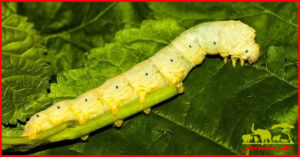
A complete article about Red Ant with best info
Red ant is a general term for many ants with red body color, not a specific species. The picture shows a red ant . The red ant is about 3 mm long, with antennae and legs covered with stinging hairs . It is a carnivorous or predatory ant, and has the most primitive lifestyle and morphological structure in the family Formicidae .
Morphological characteristics
The body length of worker ants is about 0.3 cm, orange-red to dark red. The abdomen, antennal peduncle , and each leg segment are brown. The erect hairs on the body are simple and do not form a trident. The head (excluding the upper jaw) is slightly longer than it is wide, nearly square, with longitudinal stripes on the top and sides of the head, and short transverse stripes in between. The compound eyes are small, oval, black, and located in the middle of the head, without simple eyes.

The antennae have 12 segments, which are covered with dense hairs. The club has 3 segments. The first and second clubs are of equal length, and the third club is twice the length of the second club, with antennal grooves. The base of the lip has longitudinal stripes, and its rear edge extends between the bases of the antennae, with a single longitudinal ridge in the center. The upper jaw has longitudinal stripes, and the chewing edge has 6 teeth, the 2 teeth at the end are larger, and the lower jaw has 4 segments.
Red Ant Chest
The chest is about the same length as the head (including the upper jaw), the front of the prothorax is relatively wide, the front angle is prominent, the pronotum, mesothorax and metanothorax have reticular ridges, the groove of the pronotum is not obvious, the groove of the mesothorax and metanothorax is obvious above, and the sides are concave, the metanothorax is narrow and short, and there are 2 pairs of thick spines on the middle and rear edges of the back of the thoracic and abdominal segments , the one in the middle is longer, and the center is dotted.
There is a simple spur on each leg tibia. The abdomen is oval, smooth, and 4 segments are exposed. The abdominal handle has 2 tubercles, the first tubercles are longer than the width, with a handle at the front end, and the second tubercles are transversely oval, slightly wider than the length, and wider than the first tubercles.

Living habits
Ant nests are generally not large, with only a few hundred individuals at most. They usually do not hunt in groups, but individually. However, some species hunt in groups.
Red ants are very good at fighting, but they are lazy and unwilling to look for food or raise children. Even if food is next to them, they will not eat it. They rely on servants to do everything for them. In order to achieve their goals, they rob different types of ants from their neighbors, such as black ants , and take away the pupae of others and carry them back to their own nests. Soon after, the pupae they robbed shed their skin and became active servants at home.
When the hot June and July come, the red ants set out from their homes in a mighty procession, the entire team is more than 5 meters long, blindly searching for the target – the black ants. Once the target is found, the leading ant stops, and the other ants catch up with it. After confirming the situation is true, they all rush into the black ants’ home. After a fierce fight, the victory belongs to the red ants. They bite the pupa with their large jaws and rush back home.
Expedition
The distance of the red ants’ expedition depends on the distance of the black ants’ homes. They do not choose the route they go on, nor do they have a clear destination. They can go through anything except waterways. But their way back is unwavering. No matter how winding or dangerous the way they came out is, they will go back the same way. They only recognize the original way.
Experiments have shown that they do not rely on smell to find their way home, but on vision. Ants rely on their eyesight to return from the original route, but this vision is very narrow. Vision alone is not enough. Ants also have a very strong memory. This memory can retain impressions until the next day or even longer. This memory is extremely faithful, because it guides the team through all kinds of uneven ground, walking the same path as the day before.
Distributed
Ponerine ants are a species of Formicidae , which are found in subtropical and tropical humid areas around the world. They are not common in large cities .
Medicinal value
Pharmacological and immune function experiments on red ants at home and abroad have proved that red ants have obvious anti-inflammatory, antiasthmatic, sedative, liver-protecting and analgesic effects. In particular, they have good effects on rheumatism , rheumatoid arthritis , infantile stunting caused by zinc deficiency , and premature aging in the middle-aged and elderly . And it has a certain anti-cancer effect. It has an adaptogenic bidirectional regulatory effect on the human immune function, and has a significant inhibitory effect on fungi and Staphylococcus aureus .
Red ants has obvious effects on strengthening the body and bones, strengthening the body and eliminating evil, enhancing the human immune function, sexual function , fitness, beauty, and anti-aging. In addition, it has good therapeutic effects on rheumatoid arthritis , rheumatism , sciatica , malignant tumors , chronic hepatitis , tuberculosis , impotence , premature ejaculation , spermatorrhea , premature gray hair , neurosis , iron deficiency anemia , etc.
Main Impact
Red ants have several queens in each nest , and they have strong reproductive capacity . They crawl on infectious objects (such as used surgical dressings and items in the toilet), and directly carry a variety of pathogens (such as typhoid , dysentery , plague , etc.). When they eat human food, they will bring the germs to the food, causing a variety of diseases.
When red ants are stimulated by external factors, they will use their sharp mouths to bite humans and animals in a self-protective manner. The bites will cause itching and pain , accompanied by a faint odor. Therefore, people living indoors should not touch red ants with their hands when they find them, otherwise they may be bitten or infected with the germs they carry.
Prevention
First, we need to cut off the possibility of red ants entering the home at the source. This requires residents to do the following: Before decorating the home, they should handle or clean the home decoration materials to avoid bringing ants into the house. Because the most attractive thing to ants in the home is sweet and greasy food, so food should be collected in time, and food in the kitchen and storage room should be properly stored. Honey and other foods should be covered and stored to prevent red ants from taking advantage. In addition, the room should be kept clean and hygienic, and various gaps and holes in the room should be blocked to prevent ants from entering the room to build nests and reproduce.
Secondly, the chemical control of household ants mainly relies on poison baits . Commonly used poison baits are cockroach and ant poison baits. When placing, the principle of more points and less quantity should be follow. The carrying capacity of worker ants should be use to bring the medicine into the nest to feed the ants that cannot come out to eat. Through a chain reaction, the purpose of elimination is achieve. When trapping, first place a pile of poison bait every 1 meter in kitchens and storage rooms where ants are seriously infest. Each pile weighs two grams and pays attention to moisture-proof.
After 3 days, check whether the poison bait has been move and eaten, and pay attention to appropriate supplementation. Generally, it can play a killing role after 10 days. When using chemical methods, avoid using aerosol insecticides or sprays indoors to avoid causing the population to spread and aggravate the ant damage. It is necessary to eliminate the roots.


2 thoughts on “A complete article about Red Ant with best info”
Comments are closed.